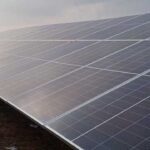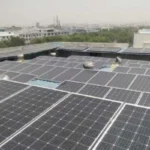Solar Industry Faces Growing Losses from Underperforming Equipment
Solar Industry Faces Growing Losses from Underperforming Equipment
According to the Raptor Maps’ Global Solar Report, the amount of power loss due to equipment anomalies has nearly doubled from 1.61% in 2019 to 3.13% in 2022. This trend is expected to continue, with anomaly-driven power loss potentially growing to almost 6% by 2025.
The report also found that for sites larger than 200 MW, average underperformance due to anomalies has more than tripled since 2019, resulting in an estimated annual revenue loss of $82M for the 24.5 GW of assets analyzed in 2022, translating to an average loss of $3,350 per MW. Extrapolating these findings to the total global installed PV capacity (excluding residential) as of the end of 2021, the report estimates that the industry is facing a $2.5B annual revenue loss.
Furthermore, the report revealed that polycrystalline modules are more likely to show module-level and submodule-level anomalies on inspection compared to thin film and monocrystalline modules. Asset owners are increasingly looking for more granular data, with 32% of Raptor Maps customers requesting IEC-compliant Comprehensive Inspections in 2022, up from 23% in 2021.
The report emphasizes the need for asset owners and managers to monitor equipment performance over time and proactively identify maintenance issues and warranty claim opportunities.
Overall, the Raptor Maps Global Solar Report emphasizes the importance of proactive monitoring and maintenance to ensure the long-term health and profitability of solar assets. With the use of innovative technologies solar stakeholders can take steps to address the growing issue of equipment anomalies and underperformance, and help solar installations flourish for decades to come.
In conclusion, the solar industry needs to take proactive steps to address the growing problem of underperformance due to equipment anomalies. Raptor Maps’ Global Solar Report provides valuable insights and benchmarks to help asset owners and managers monitor their solar assets’ health and identify issues before they become costly problems.
Suggested Articles

Solar Sector Growth in India Slows as Investments Decline in Q1 2023
India’s solar sector experiences an investment slowdown in Q1 2023, reflecting challenges in funding and growth for renewable energy projects.

Sir! Solar Mein Itna Chalta Hai!” When to Reject a Site: The Truth About Shadow Analysis
Discover the importance of solar site assessment and shadow analysis to optimize rooftop solar performance, prevent shading losses, and maximize energy generation.

Capex vs Opex Solar Model: Which is Better for Your Energy Needs?
Solar energy systems are becoming increasingly popular in homes and businesses around the world. With rising electricity costs, solar energy provides an attractive alternative to traditional energy sources.

Haryana and UP Face Delays in Solar Net Metering Approvals
Net metering for rooftop solar in Haryana and Uttar Pradesh faces procedural delays, affecting solar adoption and efficiency for residential and commercial consumers

Blame it on Sun! Average Solar PLFs not satisfactory
Explore the reasons behind low average Solar PLFs, from environmental factors to system design, and learn strategies to boost solar plant performance

Solar Microgrids: All you need to know
Discover how solar batteries store excess energy, maximize your solar system’s efficiency, and provide reliable power during outages. Learn about the types, benefits, lifespan, and maintenance tips to make the most of your solar investment.

Sustainable Solar Panel Disposal: Recycling for a Greener Future
Sustainable solar panel disposal ensures old or damaged panels are recycled responsibly, reducing waste and environmental harm. By adopting eco-friendly recycling and reuse practices, we can recover valuable materials, lower carbon impact, and make solar energy truly sustainable from installation to end-of-life.

Everything you Need to Know about Bifacial Solar Panels technology
Learn how bifacial solar panels capture sunlight on both sides, boosting energy efficiency and maximizing solar power generation for homes and businesses.